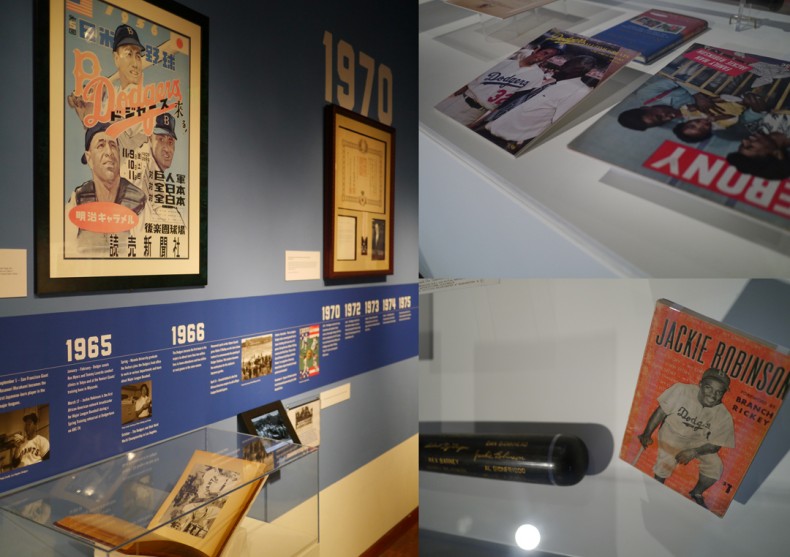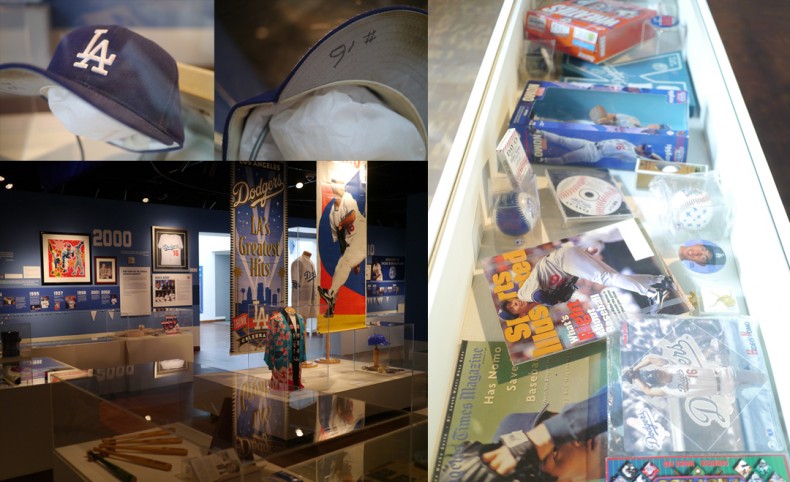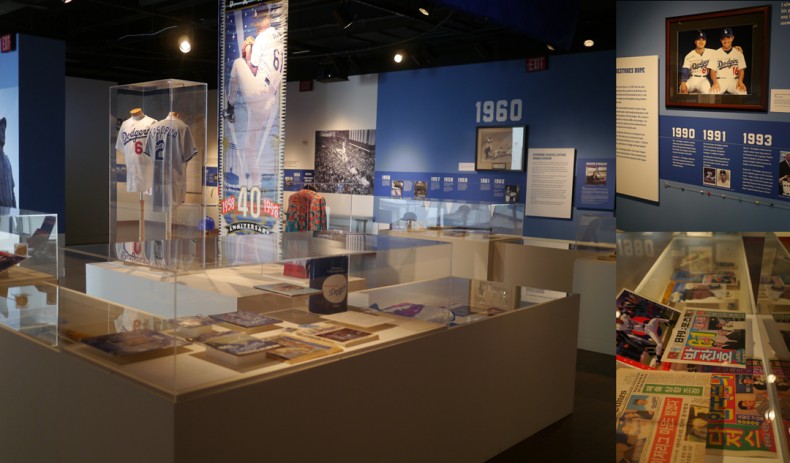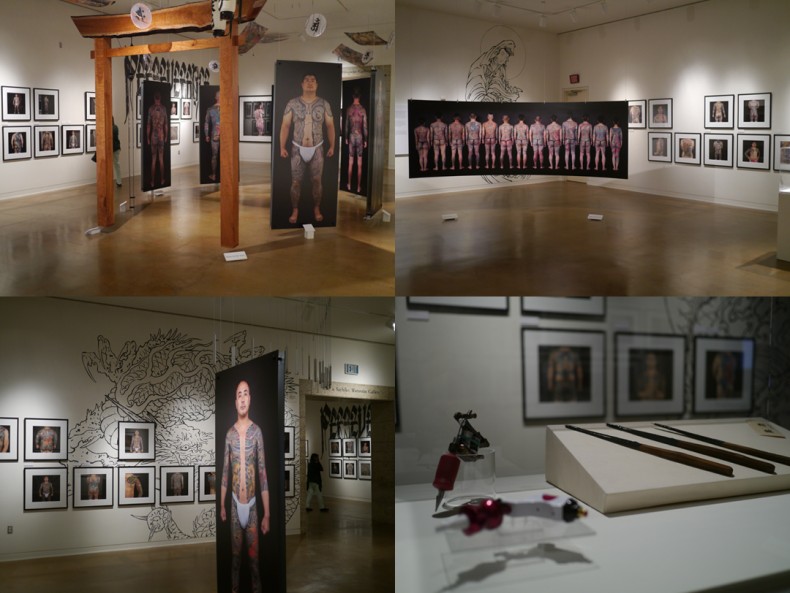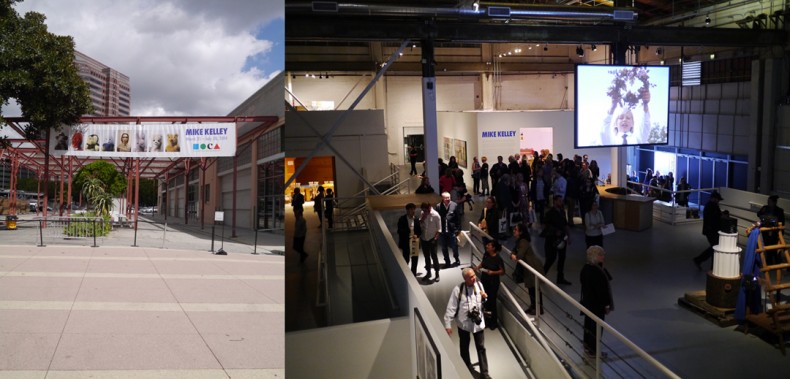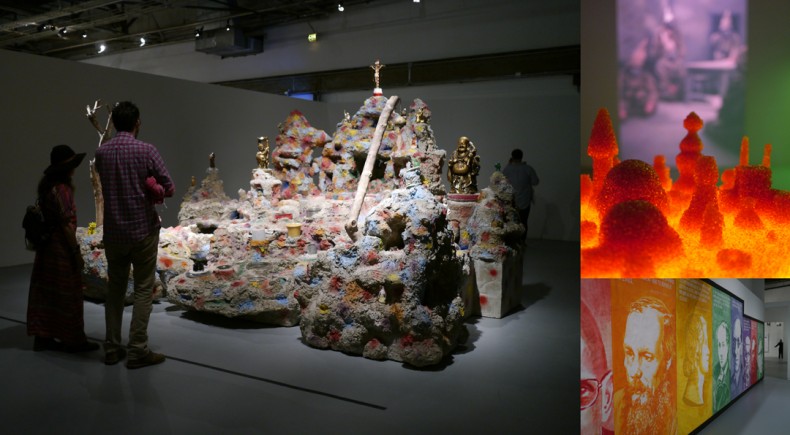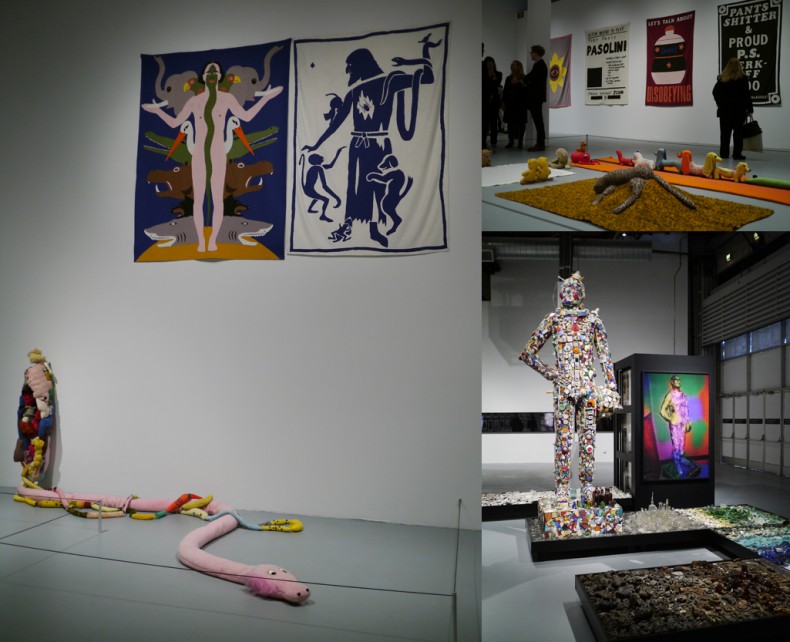Apr 01, 2014 Dodgers: Brotherhood of the Game at JANM; plus Perseverance and Mike Kelley
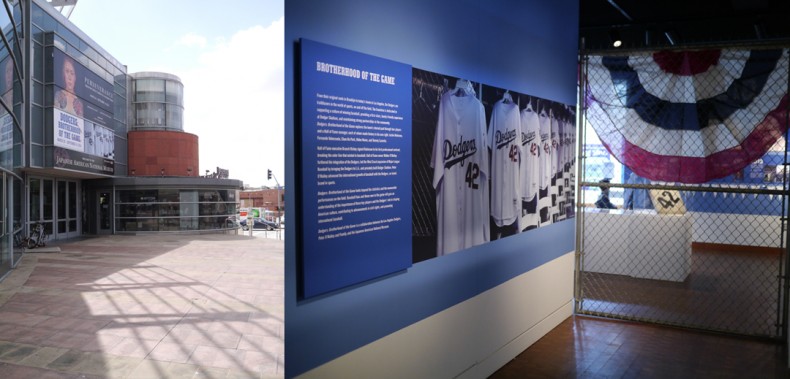
It’s probably because Clement Hanami, Art Director of the Japanese American National Museum, knows I’m a huge Dodger fan that he invited me to check out the brand-new exhibit at his Downtown L.A. place of employment. After getting me in, he told me that to him Dodgers: Brotherhood of the Game is about how baseball brings people together: families, cities, culture. Of course it all starts with Jackie Robinson, he explained before leaving me to soak in the exhibit.
Tied together by a timeline that wraps around the roughly baseball diamond-sized room, the collection includes many choice artifacts from the team’s 1956 goodwill tour of Japan. While the Blue Crew helped promote civil rights with 42 Sandy Koufax, and Fernando Valenzuela, they also helped spread the game around the world. Very cool to see my favorite baseball team celebrated for its firsts in the big pictures as well as for its athletes, its wins, and its championships.
Of course, much of the show is dedicated to Hideo Nomo, the 1995 Rookie of the Year who not only inspired Nomomania but brought a wave Japanese players to the Major Leagues. I remember seeing The Tornado pitch at Chavez Ravine, and the excitement helped us fans forget if not forgive the Major Leagues for the recent strike. Chan Ho Park is another Dodger that I got to see often. I always remember him for kicking Tim Belcher but was reminded that he rose to prominence after the riots and was a huge source of pride for Koreans.
Rickey, O’Malley, Lasorda–Dodger fans will love the small but soulful exhibit which features many of their favorite personalities and so will most baseball aficionados (not S.F. Giants fans). But because the material is presented in a social context, anyone who views L.A. as not only a microcosm of the world but also a leader in cultural trends and mixing will appreciate it
Afterward, I went upstairs to check out Perseverance. Curated by Takahiro Kitamura and shot by Kip Fulbeck, it rightfully places traditional Japanese tattoo in an art gallery setting. The life-sized pictures, which show front and back, are especially cool and are great for communicating the skill and sophistication of the tattoo artists–not to mention the pain threshold of the subjects. I didn’t see any missing pinkies…
Next door to JANM is MOCA’s Geffen Contemporary, where I recently attended Media Day for the new Mike Kelley show. Curator Bennett Simpson billed it as the “biggest Mike Kelley show ever” and I believe him. Paintings, sculpture, video, and installation–every facet of the art student, instructor, and icon is present in layers upon layers.
The diversity of Kelley’s work is seen in his large works from the Chinatown-based Framed and Frame (1999) to the Superman-inspired Kandors (2007-2011) to the more literary Pay for Your Pleasure (1988). The Detroit transplant took inspiration from pop culture, high culture, and his surroundings to make meaningful art that is at once playful and subversive.
Also present is Kelley’s most well-known works, which place stuffed animals in the adult contexts of therapy, portraiture, and pornography (as showcased in the packaging of Sonic Youth’s Dirty). The fleeting nature of love, experienced by what appear to be thrift shop finds, is replaced by loneliness and abuse. Meanwhile, astronaut John Glenn is covered in porcelain. The much-loved L.A.-based artist committed suicide in 2012 but his darkly humorous spirit and long-lasting legacy live on at MOCA.
Both museums are in the same plaza in Downtown L.A.’s Little Tokyo, and make for a great day.
MOCA
152 North Central Avenue
Los Angeles, CA 90012
Japanese American National Museum
100 North Central Avenue
Los Angeles, CA 90012
See you there!



